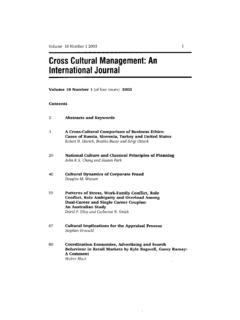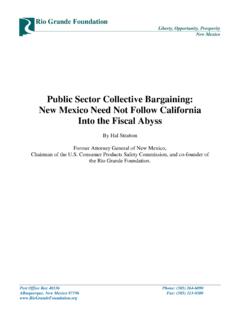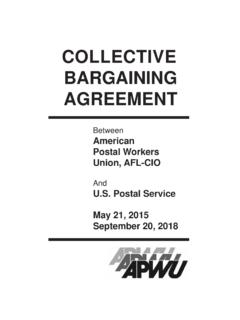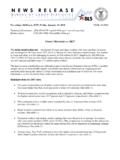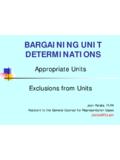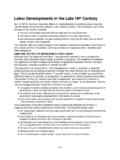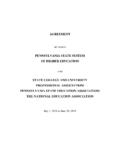Transcription of LABOR UNIONS AND COLLECTIVE BARGAINING: A …
1 LABOR RELATIONS, UNIONS AND COLLECTIVE bargaining : A POLITICAL ECONOMIC ANALYSIS Walter Block ColLege of the Holy Cross, Amherst It is not difficult to document the fact that many segments of our society extol the virtues of unionism, as commonly prac- ticed. Some people defend UNIONS as a means of promoting employment. Others feel that "social justice" is a sutficient warrant for this curious institution. So deeply embedded in our folkways is the concept that UNIONS are legitimate institutions that many mainline religious organizations have even gone so far as to invite them to organize their own Church employees - on what chey see as moral grounds. The simple fact is thal: in the minds of most pundits, UNIONS have a legitimate role to play in our society. How else can we account for the fact that gangs of organized laborers who have engaged in violent strikes not only still remain at large, but are widely applauded for their courage and convictions?
2 Were any ocher group of people to have interfered with the lives and property of others in 2 similar manner, they would have been summarily clapped into jail, and been considered proper objects of fear, loaching, ridicule and pity, the reaction elicited in most people by xtivities criminal. Compiexity Cantrary to the popular notion, however, unionism is a complex phenomenon, which admits of a voluntary and a coercive aspect. The philosophy of free enterprise is fully consistent with voluntary unionism, but is diametrically opposed to coercive unionism. What do all varieties of unionism, both coercive and voluntary, have in common? UNIONS are associa- tions of employees, organized with the purpose of bargaining with their employer in order to increase their wages.' 'Since money wages are funds which the employees take home, and working 478 JOURNAL OF SOCIAL, POLITICAL & ECONOMIC STUDIES What, then, is the distinction between invasive and non- invasive UNIONS ?
3 The latter obey the libertarian axiom of non- aggression against non-aggressors; the former do not. Legiti- mate UNIONS , in other words, limit themselves to means of raising wages which do not vioiate the rights of others; illegiti- mate UNIONS do not so inhibit themseives. Some pundits have declared their hll support for the prinaple of fEee and voluntary association in LABOR UNIONS . If this constitutes moral approval of voluntary UNIONS , and condemnation of the coercive type, well and good. But if it is intended to apply to extant LABOR organizations, this statement is disingenuous. It is not even a rough approximation of how organized LABOR has operated - and still continues to operate - in the modern worId. Coercion Let us be absolutely clear on this distinction, for it is at the root of any accurate assessment of unionism.
4 There are those LABOR organizations which do all they can to raise their mem- bers wages and working conditions - except violate the (negative) rights of other people by initiating violence against them. These can be properly called voluntary UNIONS . But then there are those which do all they can to promote their members welfare both by legi tirnate non-rights-violative behavior as well as by the use of physical brutality aimed at non-agsressing individuals. With regard to the activity of coercive UNIONS defined in this manner, Ludwig von Mises has stated: conditions embody Funds which are spent, at least in part, in behalf of the employm while on the job, there are really two desiderata here. One, the total of money wages and working conditions, and two, the allocation between them. On the fret market, the employer has a great incentive to allocate these two sorts of wage expenditures in accordance with the desires of his employees.
5 If. for example, the workers in his plant prefer most of their wages in the form of take-home-pay. and very little in the form ol expenditure for amenities on the job site, the employer who ignores this desire (or, equivalently, fads to ferret out this information) will suffer higher quit rates- or else he will have to increase his total wage paduge. in order to compete with other employers who are better able to discern employee rases in this matter. LABOR RELATION S, UNIONS AND COLLECTIVE bargaining 479 ~ .. LABOR UNIONS have actudly acquired the privilege of violent action. The governments have abandoned in their hvor the essential attribute of government, the exclusive power and right to resort to violent coercion and compul- sion. Ofcourse, the laws which make it a criminal offense for any citizen to resort - except in case of self-defense - to violent action have not been formally repealed or amended.
6 However, actual LABOR union violence is tolerated within broad limits. The LABOR UNIONS are prac~dly free to prevent by force anybody from defymg their orders concerning wage rates and other LABOR conditions. They are fEee to inflict with impunity bodily evils upon strikebreakers and upon entre- preneurs who employ strikebreakers. They are free to destroy property of such employers and even to injure customers patronizing their shops. The authorities, with the approval ofpublic opinion, condone such acts .. In excessive cases, if the deeds of violence go too far, some lame and timid attempts at repression and prevention are ventured. But as a rule they fail .. What is euphemistically called COLLECTIVE bargaining by union leaders and pro- LABOR legislation is of a quite different character. It is bargaining at the point of a gun.
7 It is bargaining between an armed party, ready to use its weapons, and an unarmed party under duress. It is not a market transaction. It is a dictate forced upon the employer .. It produces institutional unemploy- ment. The treatment of the problems invoived by public opinion and the vast number of pseudo-economic writings is utterly misleading. The issue is not the right to form associations. It is wherfier or not any association of private citizens shouid be granted the privilege of resorting with impunity to violent action. Neither is it correct to look upon the matter from the point of view of a right to strike. The problem is not the right to strike, but the right - or vioience - to force other people to strike, and the hrther right to prevent anybody from working in a shop in which a union has called a strike.
8 (Ludwig von Mises, 1966, pp. 777-79). 480 JOURNAL OF SOCIAL, And in the view of Friedrich POLITICAL k ECONOMIC STUDIES .. Hayek: .* It cannot be stressed enough that the coercion which UNIONS have been permitted to exercise contrary to all principles of freedom under the law is primarily the coer- cion of fellow workers. Whatever true coercive power UNIONS may be able to wield over employers is a consequence of this primary power of coercing other workers; the coercion of employers would lose most of its objectionable character if UNIONS were deprived of this power to exact unwilling support. Neither the right of voluntary agreement between workers nor even their right to withhold their services in concert is in question. (FA von Hayek, 1960, p. 269.)' Given that there are legitimate and illegitimate forms of LABOR or-ganizarion.
9 It foilows char sound public policy consists of defending the former and eliminating the latter. In legai terminology, this reduces to a call for the repeal of legislation that promotes invasive action, and for an expansion of the legal protections for non-invasive ones. In the just society, a union may do anything that individual citizens have a right to do, and must refain from all activities prohibited to other citizens. The LABOR code, in other words, ought be nothing more than the ordinary rule of law (Hayek, 1973; Leoni, 1961, pp. 59-76), applied to management- LABOR relations. This leads us to the $64,000 question. Which arrows in the quiver of organized LABOR are invasive, and which are not? Let us start off by mentioning severai legitimate techniques utilized by organized LABOR , and then look at the panoply of illegitimate actions engaged in by UNIONS .
10 ' Legitimate Unionism Mass Walkout First is the mass walkout: threatening, or organizing, a mass .' ~S hloqiii 0. Rev:i&h 1981. p. 3: "Httdr:g 3 person oxr !he head with 3. baseball bat is much less likely to be treated as criminal if the person wielding the bat is nn organized ( unionized) worker in a !abor dispute." See also Hutt. 1953. LABOR RELITIONS. UNIPNS AND COLLECT!VE SARGXINING 481 waIk out, unless wage demands are met.' This is not an infringement of anyone's rights, since the employer, in the absence of a contract, cannot compel people to work for him at wages they deem too low. Nor is it any vdid objection to this procedure that the workers are acting in concert, or in unison, or in collusion, or in "conspiracy." Of course they are. But if it is proper for one worker to quit his job, then ail workers, together', have every right to do so, en masse.
